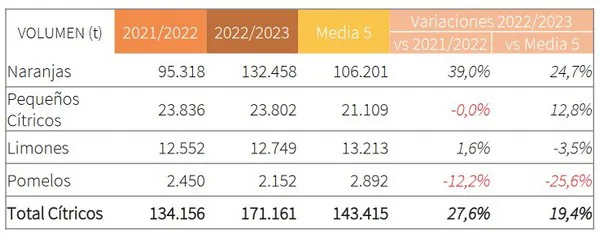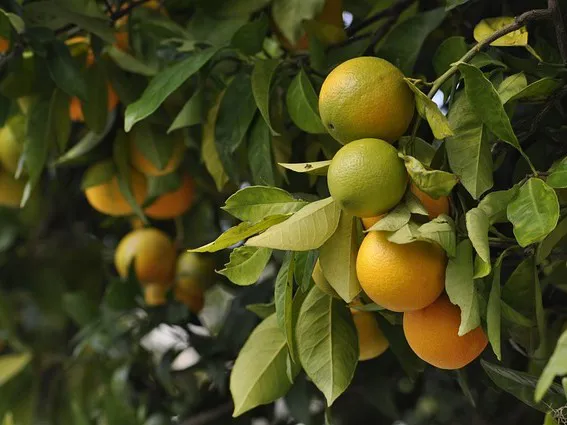In the 2022/23 campaign, Spain's orange production has been reduced by 20.9%, down to 2.96 million tons, as reported by the Ministry of Agriculture (MAPA) with data from September 2022 to April 2023. This drop has had an impact on the volumes exported to international markets, which are down by 15.4% compared to the same period of the 2021/22 campaign and by 17.7% compared to the average of the last five years, totaling 1,084,070 tons.

Shipments to the EU, which received 86% of all Spanish orange exports, dropped by 15% compared to a year ago and by 16% compared to the average. "All destinations recorded drops, especially Italy (-36% compared to the average) and Germany, the main market for Spain (-16% compared to the average)," said the Ministry's campaign report.
This lower production led to an increase in Spanish citrus imports, which amounted to 171,161 tons (the highest figure in recent years), driven by a 39% year-on-year growth in the import of oranges, which accounted for 77% of the total volume of citrus imported by Spain.

Citrus imports in Spain. Source: MAPA.
"The supply from EU origins is down by 10 points compared to the average. Portugal stands out in this area, as it accounts for 56,844 tons, which is 33% of the total, and although it is up by 10% compared to the average, its representativeness is down by 4 points. It is followed by the Netherlands, with 20,650 tons (-41.2% compared to 2021/22 and +7.5% compared to the average)."
As for third countries, their sales to Spain have increased. "The most noteworthy case is that of Egypt, with 41,280 tons; a volume that represents a +356.9% increase compared to the average of the last five seasons," says the report.
The value of orange imports stood at 72.60 €/100 kg, similar to last season's and 4% below the average, "mainly due to the greater supply of cheaper goods from Egypt."

Egypt stands as the EU's main supplier of oranges in the 2022/23 campaign
Egypt's shipments to Spain have increased significantly, but so have those to the EU. According to the EU's latest Reinforced Monitoring Report of citrus imports, with data corresponding to the period from September 2022 to August 2023, in the 2022/23 campaign, the EU imported 1,016,128 tons, 39.6% more than in the previous campaign (+288,000 t) and 16.5% (143,600 tons) more than the average.

Click to expand. Source: MAPA.
Egypt, with an 83.4% increase (+208,500 t) compared to the average, now stands as the EU's main supplier, with 45.1% of the total (having gained 16.5 points of share), and has pushed South Africa (42.5% of the total) to second place.
Taking only into account the data from 2023 (January-August), the EU-27 has imported 658,315 tons of oranges, 67.8% (+266,000 tons) more than in the same period of 2022, and +23.7% (+126,300 tons) more than the average.

Click to expand. Source: MAPA.
Once again, Egypt stands out the most when it comes to the increase of imports, with an 84.2% rise (+208,300 tons) compared to the average. The country accounted for 69.2% of the total supply in that period.
"In June, there has been a significant increase (+125.2%) in the quantities imported by the EU compared to the average, mainly due to the 'Egypt effect', as with 76,500 tons, its volumes quadrupled in that month compared to the average," says the document.
The data can be consulted in greater detail in the following links to the MAPA reports, both for Spanish imports and EU imports.
